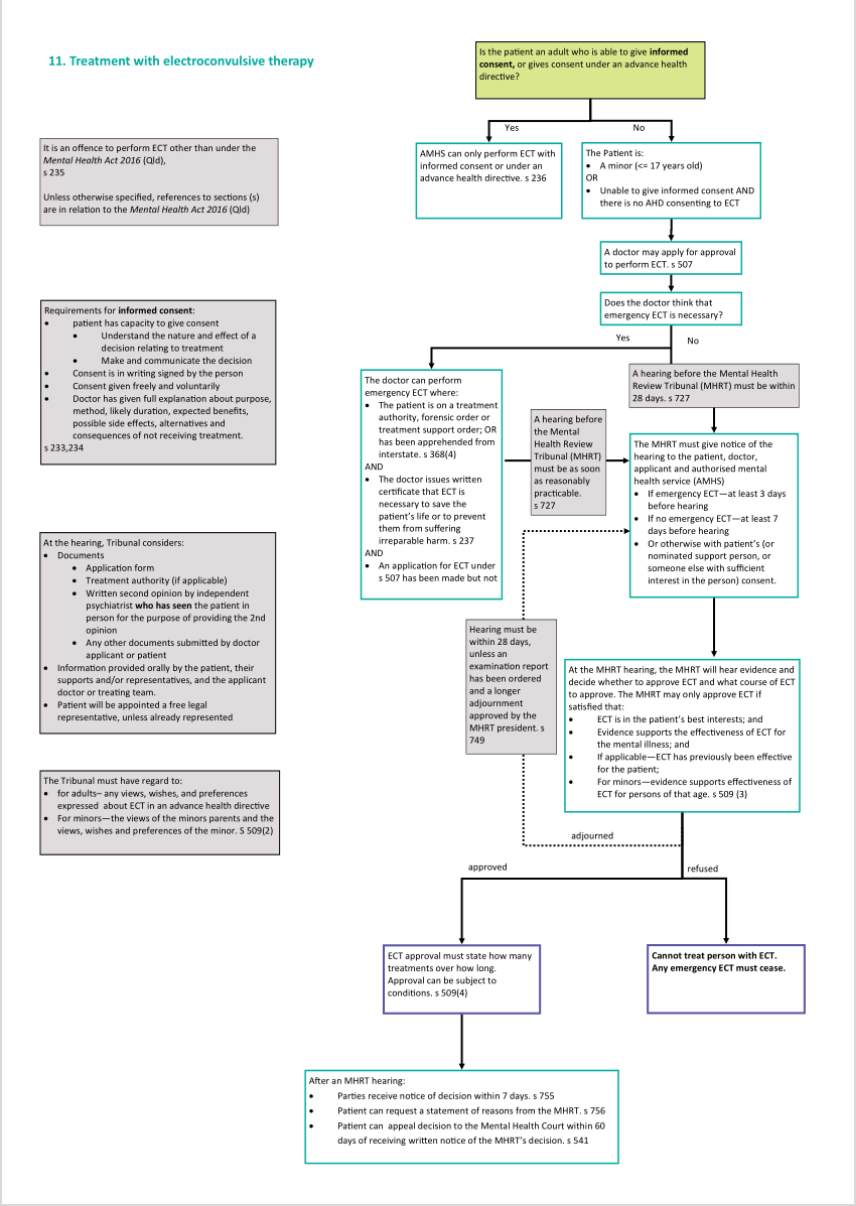Mental Health Act – Regulated Treatment
Regulated Treatment
Two types of treatment are categorised as regulated treatment:- electroconvulsive therapy
- non-ablative neurosurgical procedure.
However, electroconvulsive therapy can be given in an emergency situation, if certain procedures are followed, to save the patient’s life or to prevent the patient suffering irreparable harm (s 237 Mental Health Act).
Non-ablative neurosurgical procedures can only be performed with the informed consent of the patient in the case of an adult and the approval of the Mental Health Review Tribunal (ss 238–239 Mental Health Act).
It is a criminal offence to give these treatments other than as provided for.
Reference and for more information: Queensland Law Handbook
See our Mental Health Act Flowchart for Treatment with ECT:
Prohibited Treatments
It is a criminal offence to administer either of these therapies:- insulin induced coma therapy
- deep sleep therapy (s 240 Mental Health Act 2016(Qld) (Mental Health Act)).
Reference and for more information: Queensland Law Handbook
Restraint and Seclusion
Chapter 8 of the Mental Health Act 2016 (Qld) oversees the use of mechanical restraint, seclusion and physical restraint on patients in authorised mental health services.The chief psychiatrist may give approval enabling an authorised doctor to authorise the use of mechanical restraint on an involuntary patient, if the chief psychiatrist is satisfied that there is no other reasonably practical way to protect the patient or others from physical harm.
Mechanical restraint may be used if authorised by an authorised doctor and a number of other requirements are met.
Similarly, an involuntary patient may be kept in seclusion only if a number of requirements have been met. The chief psychiatrist may give directions restricting the use of seclusion and, if such a direction has been given, it must be complied with.
Reference and for more information: Queensland Law Handbook








